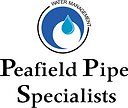Hydrostatic pressure testing is a critical process used to evaluate the strength and integrity of pipes. It involves subjecting pipes to increased internal pressure to assess their ability to withstand operational conditions. However, a pertinent question arises: Can a hydrostatic pressure test potentially damage pipes? In this article, we will delve into the factors that influence pipe integrity during testing, examine potential risks and damages, explore mitigation measures and best practices, and provide real-life examples and case studies.
Understanding Hydrostatic Pressure Testing:
Hydrostatic pressure testing is a method used to assess the structural integrity of pipes by subjecting them to elevated pressure levels. The primary purpose of this test is to identify potential weaknesses, leaks, or failures before the pipes are put into service. The process typically involves filling the pipe with water or another suitable fluid, pressurizing it to predetermined levels, and monitoring for any abnormalities or signs of distress.
Factors Affecting Pipe Integrity during Hydrostatic Pressure Testing:
Several factors can impact the behavior and integrity of pipes during hydrostatic pressure testing. The type of pipe material, such as steel, PVC, or ductile iron, plays a significant role in determining how the pipe will respond to the applied pressure. Additionally, pressure limits defined by industry standards and regulations need to be carefully considered. External factors like temperature variations and environmental conditions can also influence the pipe’s response to the test.
Potential Risks and Damages Associated with Hydrostatic Pressure Testing:
While hydrostatic pressure testing is generally considered safe, there are potential risks and damages that can occur if the test is not conducted properly. Pipe failures can happen during testing due to factors such as manufacturing defects, weak spots, or improper installation. Overpressurization can cause excessive stress on the pipes, leading to deformation, leaks, or even rupture. Furthermore, older or weaker pipes may be more susceptible to damage during testing.
Mitigation Measures and Best Practices:
To minimize the risks associated with hydrostatic pressure testing, several mitigation measures and best practices should be followed. Prior to testing, thorough inspections and preparations should be carried out to identify any existing flaws or weaknesses. Proper pressure control and monitoring are crucial during the test to avoid exceeding the pipe’s limits. Adequate safety precautions, such as using appropriate personal protective equipment and implementing emergency response protocols, must be in place. Expert supervision and guidance can ensure that the test is conducted accurately and safely.
Case Studies and Examples:
Examining real-life examples and case studies provides valuable insights into the potential damages that can occur during hydrostatic pressure testing. By learning from past incidents, industry professionals can understand the root causes of pipe failures and implement preventive measures accordingly. Various organizations and regulatory bodies have developed guidelines and standards to enhance safety and prevent damage during testing.
Benefits and Advantages of Hydrostatic Pressure Testing:
Despite the risks, hydrostatic pressure testing offers several benefits. By subjecting pipes to rigorous testing, their reliability and safety can be assured. The test helps in early detection of weaknesses or flaws, enabling corrective actions to be taken before the pipes are put into service. Compliance with regulatory requirements is also achieved through proper testing procedures. Overall, hydrostatic pressure testing instills confidence in the performance of pipes.
Conclusion:
In conclusion, while hydrostatic pressure testing can potentially damage pipes if not performed correctly, following proper procedures and guidelines minimizes the risks. Factors such as pipe material, pressure limits, and external conditions influence the pipe’s behavior during testing. Mitigation measures, best practices, and adherence to industry standards help ensure the integrity and safety of pipes. By combining expert knowledge, cautionary measures, and lessons learned from past incidents, hydrostatic pressure testing can be conducted effectively, providing a reliable assessment of pipe strength and integrity.
